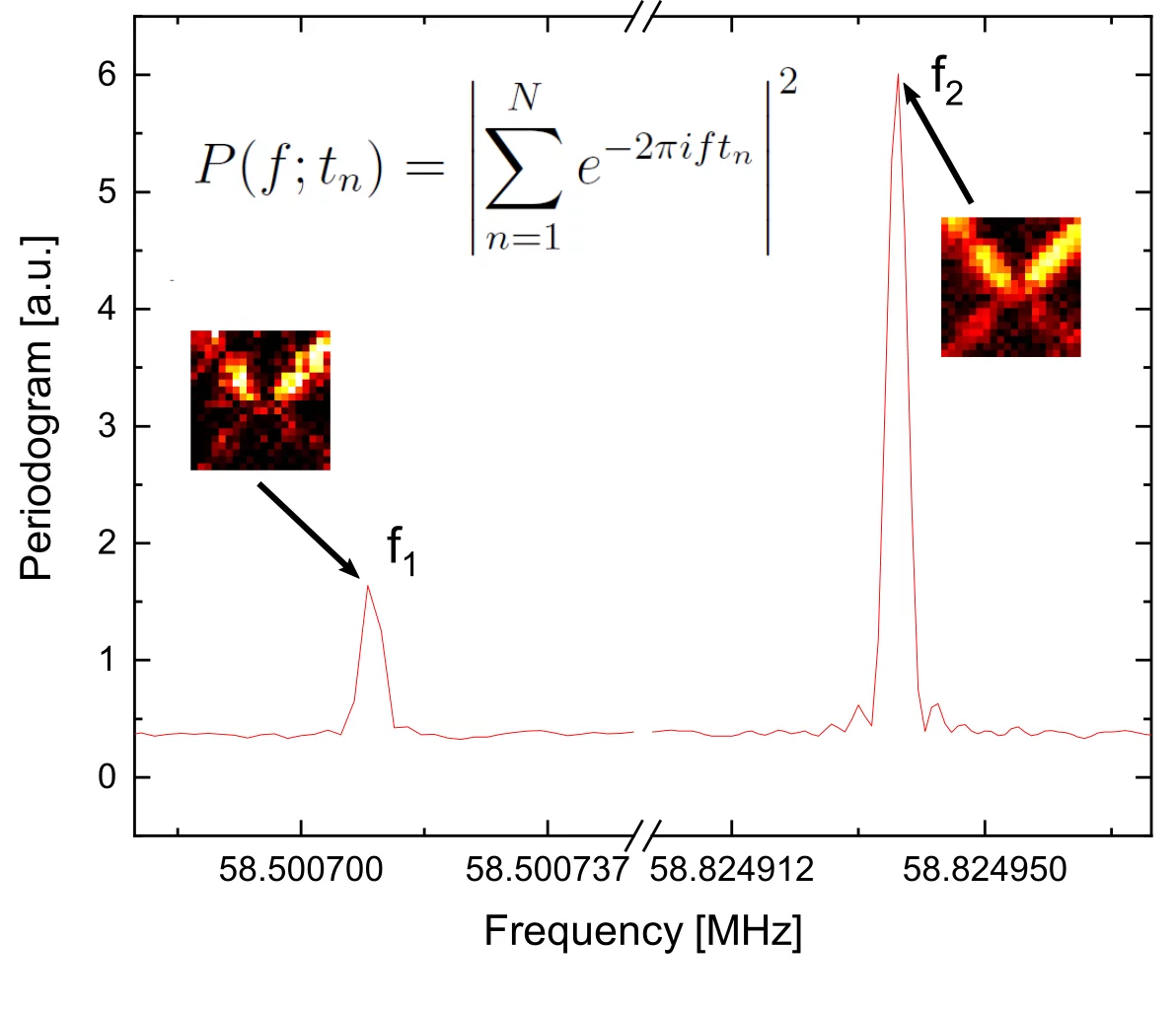Time-resolved X-ray microscopy is a powerful technique that has enabled for the imaging of several magneto-dynamical processes occurring at the nanoscale, both in time and space. The principle behind time-resolved microscopy is called pump-probe protocol, where an excitation in the sample under investigation is excited by an external, known, signal (called pump signal), and the state of the sample is probed at a set of known delays from the onset of the excitation signal.
However, not all dynamical processes can be locked to an external excitation signal: examples of such processes are auto-oscillatory dynamics, occurring intrinsically in the system (e.g. in a spin torque vortex oscillator, where the oscillation frequency can be tuned by varying the magnitude of an applied DC current), and spontaneously forming coherent populations, such as those occurring in Bose-Einstein condensates. Those processes are invisible in classical pump-probe microscopy, providing motivation for the development of alternative techniques aimed at their visualization.
In order to provide a methodology aimed at the visualization of auto-oscillatory dynamics through time-resolved X-ray microscopy, scientists in a collaboration between the Paul Scherrer Institute in Switzerland and the KTH in Sweden have repurposed a century-old algorithm to be applicable in time-resolved X-ray microscopy. This algorithm, known under the name of Schuster - or classical - periodogram, was originally employed for the determination of the oscillation periods in astronomical phenomena from sparsely sampled datasets. The repurposed Schuster periodogram algorithm was successfully employed in a proof-of-principle experiment, published on the journal ACS Nano, where it was shown that the periodogram can be used to reconstruct a spatially-resolved map of the microscopic dynamics in a magnetic sample without prior knowledge of its oscillation frequency. Through this method, it will be possible to image the dynamics of so-far unexplored processes.
Contact:
Dr. Simone Finizio
Swiss Light Source
Paul Scherrer Institut
Telephone: +41 56 310 3961
E-mail: simone.finizio@psi.ch
Original Publication:
Periodogram-Based Detection of Unknown Frequencies in Time-Resolved Scanning Transmission X‑ray Microscopy
Simone Finizio, Joe Bilko Bailey, Bart Olsthoorn, and Jörg Raabe
ACS Nano 16, 21071 (2022), DOI:10.1021/acsnano.2c08874
